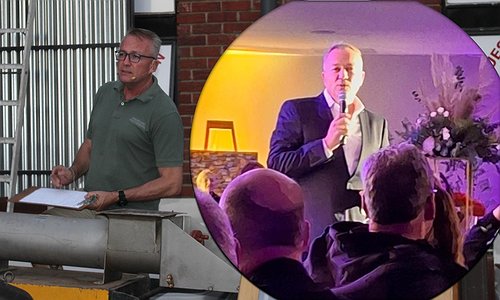Factories fall silent while agriculture props up GDP in South Africa. What does the Q1 tell us going forward?
Strong agricultural output, notably a 15.8 percent surge in horticulture and animal products, contributed 0.4 percentage points to GDP, offsetting the drag from both mining and manufacturing. Other sectors, including transport, storage and communication, as well as finance, real estate and business services, also delivered marginal gains.
Manufacturing saw declines in key subsectors such as petroleum and chemicals, food and beverages, and motor vehicles and transport equipment. Only three divisions, textiles and clothing, wood–paper and publishing, and electronics-related products, managed modest growth. Aluma Capital reported a 0.8 percent drop in production in March alone, following a 3.2 percent fall in February. April’s figures worsened, with output down 6.3 percent year on year, marking six consecutive months of contraction.
Statistician General Risenga Maluleke indicated that the modest growth highlights how vulnerable the economy remains to slipping into contraction. Maarten Ackerman, Citadel’s chief economist, described the performance as not worth celebrating. Per-capita growth remains negative, with full-year output currently tracking at roughly 0.8 percent, well below population expansion. Business sentiment shows mixed signals. The Absa Manufacturing PMI has stayed in contractionary terrain for seven months, while the S&P Global PMI edged into growth territory in May at 50.8, suggesting some early signs of recovery. Business Confidence Index readings remain subdued, reinforcing the cautious mood among firms.
Cutting interest rates appears increasingly likely. Central bank analysts recently lowered 2025 growth estimates from around 1.7 percent to roughly 1.2 percent, partially in response to sustained underperformance in manufacturing. Global financial institutions, including Capital Economics, have echoed this sentiment, urging further monetary stimulus. Structural issues such as logistics bottlenecks at ports and along the freight rail network continue to hamper industrial competitiveness. Load shedding also returned in the first quarter, further undermining electricity-intensive operations.
What recovery might look like
A sustainable turnaround in manufacturing is expected to need multiple catalysts. These include easing energy constraints to reduce operational risk and production costs, improvements in transport and port infrastructure to enhance competitiveness, and stronger global demand, particularly from traditional partners in Europe and Asia, to support export volumes. Renewed business investment, responding to improved investor confidence and policy clarity, is also essential.
Improved conditions in these areas could allow the PMI to shift further into positive territory and help production resume growth. That in turn would support broader economic expansion beyond the current 1 percent range, bolstering jobs in the sector that accounts for roughly 15 percent of GDP.



